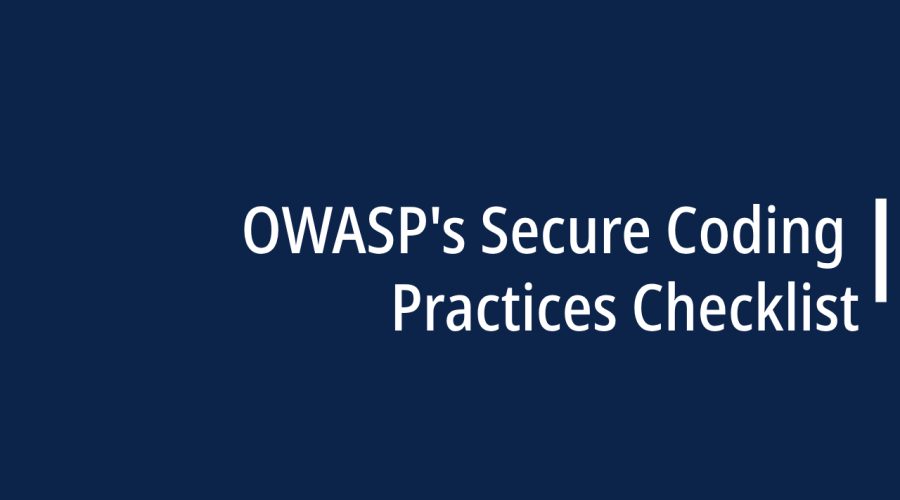As the frequency and sophistication of cyber threats continue to rise, secure coding practices have become essential for every software development project. The Open Web Application Security Project (OWASP) is a globally recognized authority in the field of application security. They provide invaluable resources and guidelines for building secure software, and one of their key assets is the “OWASP Secure Coding Practices Checklist.” In this guide, we will explore OWASP’s checklist and provide insights into how you can leverage it to enhance the security of your software applications.
The Importance of Secure Coding
Before delving into the specifics of the OWASP checklist, it’s essential to understand why secure coding practices are crucial:
- Protection Against Vulnerabilities: Secure coding helps identify and mitigate vulnerabilities early in the development process, reducing the risk of exploitation.
- Data Protection: Secure coding safeguards sensitive data, ensuring that it remains confidential, integral, and available only to authorized users.
- Reputation and Trust: Secure applications build trust among users and stakeholders, safeguarding your organization’s reputation.
- Legal and Compliance Requirements: Many industries have strict regulatory requirements for data protection and application security. Secure coding helps meet these obligations.
OWASP’s Secure Coding Practices Checklist
The OWASP Secure Coding Practices Checklist is a comprehensive resource that covers a wide range of security considerations for developers. While we can’t cover every detail in this guide, here are some key areas to focus on:
- Authentication and Authorization: Implement strong authentication mechanisms and enforce proper authorization to ensure users only access what they are allowed.
- Input Validation: Sanitize and validate all user inputs to prevent common attacks like SQL injection and cross-site scripting (XSS).
- Error Handling: Provide informative error messages to developers, but don’t expose sensitive information to attackers.
- Session Management: Manage user sessions securely, use secure session tokens, and implement session timeouts.
- Data Encryption: Protect data at rest and in transit by using encryption techniques like TLS/SSL and encrypting sensitive information in the database.
- Secure Configuration: Ensure that the application and its components are securely configured, including databases, web servers, and third-party libraries.
- API Security: Secure your APIs with proper authentication and access control mechanisms, including rate limiting and proper handling of sensitive data.
- File Uploads: Implement secure file upload mechanisms to prevent malicious file execution and unauthorized access.
- Cross-Site Request Forgery (CSRF) Protection: Use anti-CSRF tokens to prevent attackers from tricking users into performing unintended actions.
- Logging and Monitoring: Implement effective logging and monitoring to detect and respond to security incidents promptly.
Incorporating the OWASP Checklist into Your Development Workflow
To make the most of OWASP’s Secure Coding Practices Checklist, consider the following:
- Training and Awareness: Educate your development team about secure coding practices and the specific items on the c
hecklist.
- Integration into SDLC: Integrate security checks and code reviews based on the checklist into your software development lifecycle (SDLC).
- Security Testing: Incorporate automated security testing tools into your development pipeline to catch vulnerabilities early.
- Continuous Learning: Stay updated with the latest security threats and vulnerabilities by following OWASP’s resources and community.
- Collaboration: Promote a culture of collaboration between development, security, and operations teams to ensure that security is a shared responsibility.
Conclusion
OWASP’s Secure Coding Practices Checklist is an invaluable resource for developers and organizations looking to enhance the security of their software applications. By following its guidelines, you can build trust with your users, protect sensitive data, and stay one step ahead of cyber threats. Embracing secure coding practices is not just a best practice; it’s a necessity in today’s digital world.

Gloria Bradford is a renowned expert in the field of encryption, widely recognized for her pioneering work in safeguarding digital information and communication. With a career spanning over two decades, she has played a pivotal role in shaping the landscape of cybersecurity and data protection.
Throughout her illustrious career, Gloria has occupied key roles in both private industry and government agencies. Her expertise has been instrumental in developing state-of-the-art encryption and code signing technologies that have fortified digital fortresses against the relentless tide of cyber threats.
